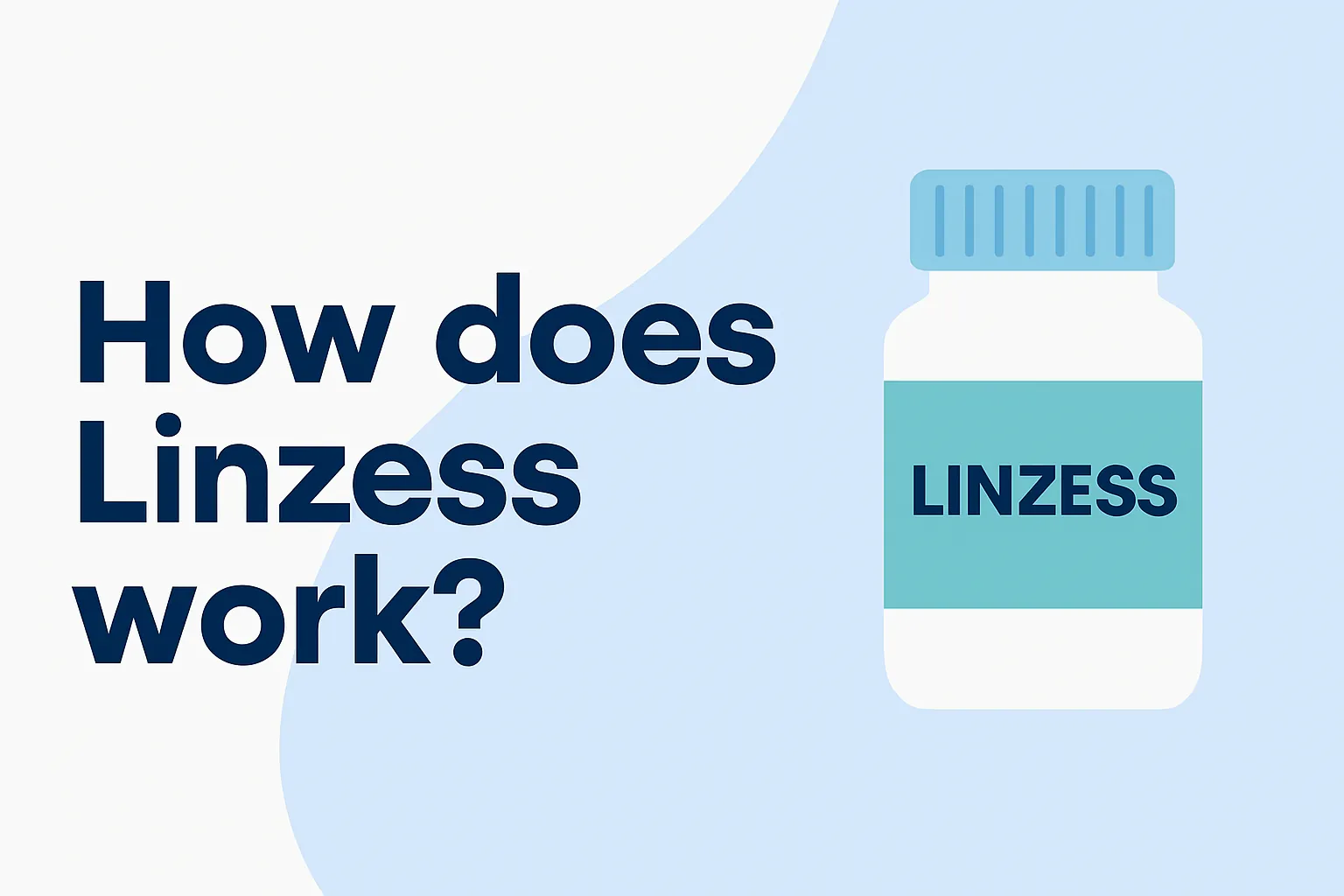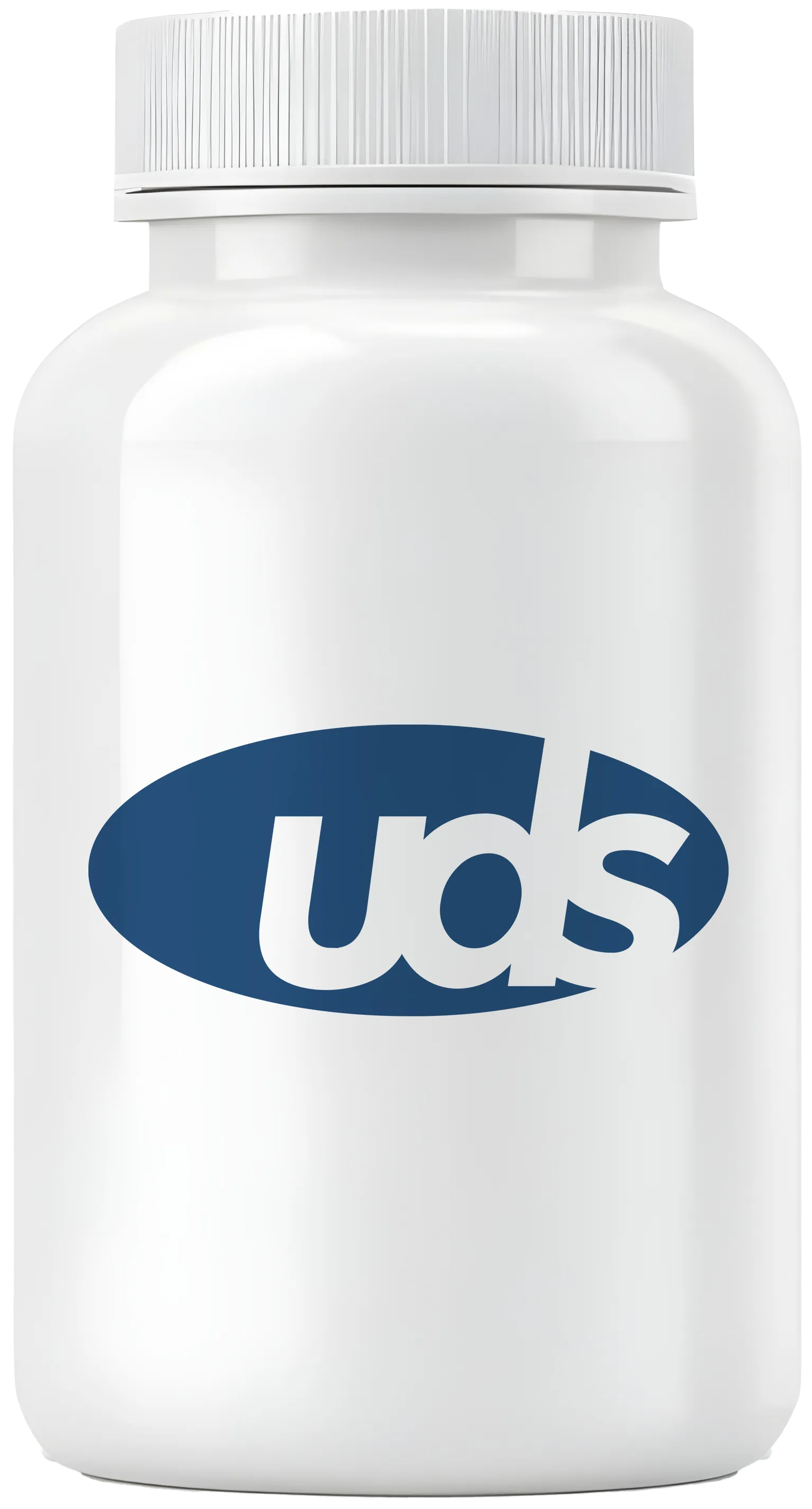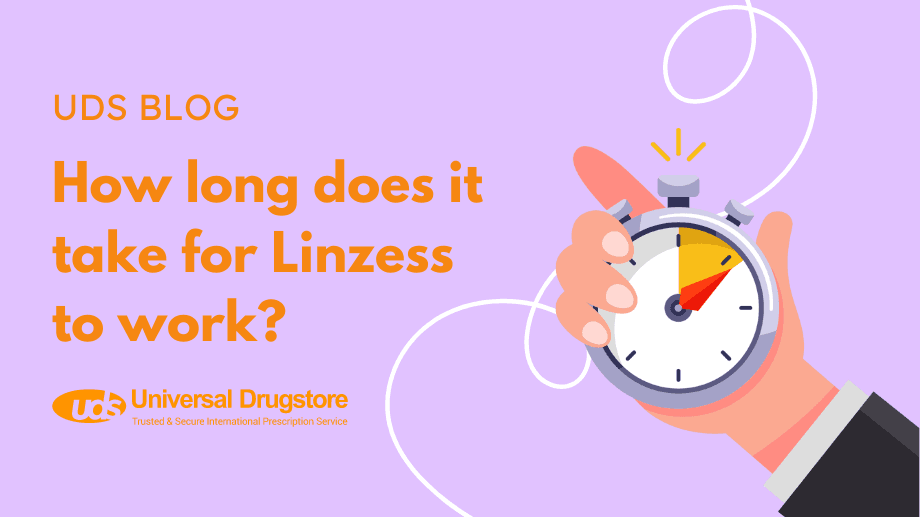How does Linzess work?

While Linzess (linaclotide) can help relieve symptoms of constipation, it works differently than a laxative. It is a guanylate cyclase-C agonist (GC-C agonist) that is thought to work in 2 different ways. GC-C is a protein that works in your intestines. Linzess stimulates the GC-C receptor, which helps increase the secretion of chloride and water in your intestines. This can help soften your stool and speed up the movement of food through your digestive tract. It also calms pain-sensing nerves in your intestines. These actions can help you have regular bowel movements and relieve belly pain and discomfort.
Keep reading as we discuss what Linzess is used for, its possible side effects, warnings, and precautions, and how to take it.
What is Linzess used for?
Linzess (linaclotide) is a brand-name prescription medication approved by the FDA to treat the following gastrointestinal (GI) disorders:
- Irritable bowel syndrome with constipation (IBS-C) in adults
- Chronic idiopathic constipation (CIC) in adults
- Functional constipation (FC) in pediatric patients 6 to 17 years of age
What doses of Linzess are available?
Linzess is available as a capsule in the following strengths:
- 72 mcg
- 145 mcg
- 290 mcg
Your dose of Linzess will depend on the condition being treated. For adults with irritable bowel syndrome with constipation (IBS-C), the usual dose is 290 mcg by mouth once daily while those with chronic idiopathic constipation (CIC) will typically take 72 mcg or 145 mcg by mouth once daily. For pediatric patients 6 to 17 years of age with functional constipation (FC), they will take 72 mcg by mouth once daily.
How do you take Linzess?
Linzess should be taken on an empty stomach at least 30 minutes before your first meal of the day or as directed by your healthcare provider. It should be taken around the same time each day. Swallow the capsule whole and do not crush or chew the Linzess capsule.
If you have swallowing issues, speak to your healthcare provider about your options. You may be able to open the capsules and mix the medicine with a teaspoon of applesauce or with bottled water.
If you miss a dose of Linzess, skip the missed dose and take your next dose at its regular time. Do not take 2 doses at the same time to make up for a missed dose.
What are the side effects of Linzess?
The most common side effects of Linzess in clinical trials when compared to placebo include:
- Bloating
- Diarrhea
- Flatulence (gas)
- Abdominal pain
Some other less serious side effects that may occur include:
- Headache
- Nausea
- Vomiting
- Indigestion
- Feeling an urgent need to have a bowel movement
- Unable to control bowel movements
- Infection (upper respiratory tract, sinus, stomach flu)
Rarely, Linzess may cause some serious side effects, including:
- Severe, life-threatening allergic reaction. Seek immediate medical attention if you have symptoms such as hives, swelling of your face, tongue, or throat, or shortness of breath.
- Increased risk of serious dehydration. Children 2 years of age and younger cannot take Linzess because of the possibility of life-threatening dehydration.
- Severe diarrhea. Although rare, Linzess can cause severe diarrhea, which can lead to dehydration that may require hospitalization.
These are not all the possible side effects of Linzess. Contact your healthcare professional for medical advice. You can report adverse effects to AbbVie at 1-800-678-1605 or the FDA at 1-800-FDA-1088 or www.fda.gov/medwatch.
Shop Medications
Are there any drug interactions with Linzess?
When this medication is taken with other prescription drugs, over-the-counter medications, vitamins, and supplements, it may change how Linzess or the other drug works or increase the frequency or severity of side effects. There are no drug interactions listed for Linzess at this time. However, you should let your healthcare provider know about any medications that you are currently taking before starting Linzess.
What warnings and precautions are there with Linzess?
Boxed Warning
This drug has a Boxed Warning from the FDA about a risk of serious dehydration in children younger than age 2 years. This is because, in animal studies, Linzess caused severe and fatal dehydration in babies. It is not known if it would have the same effect in humans. However, due to the potential risk, Linzess should not be prescribed to patients who are less than 2 years of age.
Precautions
You should be sure that your healthcare provider is aware of all your medical conditions, including if you have:
- Any type of bowel blockage
- An allergy or have had an allergic reaction to any ingredient in Linzess
- A pregnancy or plan to become pregnant
- Are breastfeeding or plan to breastfeed
Linzess was not found in the breast milk of lactating women. You and your healthcare provider should discuss the risks and benefits of taking this medication while breastfeeding.
How do you store Linzess?
Store Linzess at room temperature between 68°F to 77°F (20°C to 25°C), away from moisture and heat. To help protect it from moisture, keep the desiccant (drying agent) with the medication tightly closed in its original container.
How long does it take Linzess to start working?
You should start to get constipation relief within about 1 week of starting Linzess. If you have IBS-C, you may begin to experience relief of stomach pain, bloating, and discomfort after around 1 week, and you may see continued symptom improvement over 12 weeks.
Why do you have to wait at least 30 minutes to eat after taking Linzess?
It is important to take Linzess on an empty stomach, at least 30 minutes before your first meal of the day, around the same time each day. Taking this medication with food may increase its side effects, such as gas, stomach pain, and diarrhea.
Should you drink a lot of water with Linzess?
Although rare, Linzess may cause severe diarrhea. This can lead to dehydration which can sometimes require hospitalization. Make sure to drink plenty of fluids while you are taking Linzess. Staying hydrated may also help with your constipation symptoms. It is important to drink 6 to 8 glasses of water per day.
Can children take Linzess?
Yes, certain children and adolescents can take Linzess. It is the first treatment approved by the FDA for pediatric functional constipation (FC). FC is a common condition experienced by children and adolescents in which they have infrequent bowel movements with hard stools that can be difficult or painful to pass. The recommended dose of Linzess for pediatric patients 6 to 17 years with FC is 72 mcg orally once daily.
Related medications
- Trulance (plecanatide)
- Amitiza (lubiprostone)
- Ibsrela (tenapanor)
- Motegrity (prucalopride)
- Miralax (polyethylene glycol 3350)
Sources
- Allen P, Setya A, Lawrence VN. Pediatric Functional Constipation. StatPearls. Accessed July 15, 2024.
- Thomas RH, Allmond K. Linaclotide (Linzess) for IBS-C and CIC. P T. 2013 Mar;38(3):154-60. Accessed July 15, 2024.
- Linzess (linaclotide) capsules. FDA. Accessed July 15, 2024.
- Linaclotide (Rx). Medscape. Accessed July 15, 2024.
- Lacy BE, et al. ACG Clinical Guideline: Management of IBS. Am J Gastroenterol. 2021;116(1):17-44. Accessed July 15, 2024.




